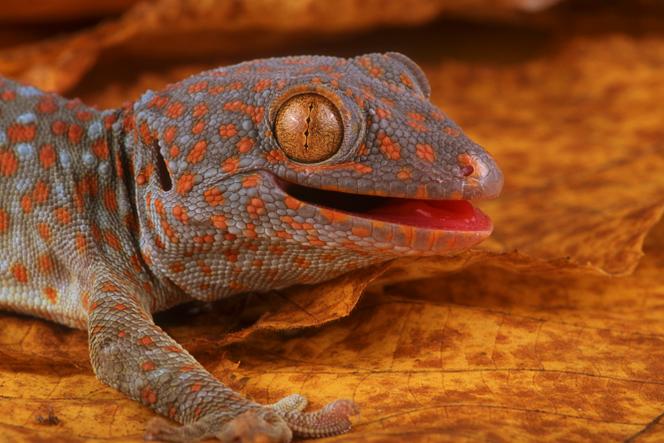


Who hasn't dreamed of having a sixth sense? A unique gift that would allow us to see in the dark or in the ultraviolet, to hear ultrasound or infrasound, to echolocate like a bat or a dolphin. Or something even more improbable, that neither you nor I could imagine. That's a bit of what an American team has just discovered in the tokay gecko. In an article published in the journal Current Biology on October 4, Catherine Carr and Dawei Han, from the University of Maryland, have just demonstrated that this reptile can hear soundless vibrations thanks to vesicles in the inner ear: the saccules.
These little cavities are no strangers to us. Located in the inner ear, they help us humans, keep our balance as well as all other land animals. In fish and some amphibian species, on the other hand, these same saccules enable them to perceive sounds traveling through water or land. Could the same be true of other groups, such as reptiles?
To answer this question, the two American researchers decided to study geckos, and not just any geckos: tokays. Like all their cousins, they are characterized by their nocturnal lifestyle and by the adhesive pads that line their legs and allow them to climb any vertical surface, including glass. But in addition to their respectable size (20 centimeters without tail) and somewhat aggressive nature, tokays are known for their singing. In other words, unlike many other reptiles, they can hear sounds, caused by air pressure on their ears and also very low-frequency vibrations propagating through the earth.
To prove this, the researchers carried out two experiments. In the first, they placed the tokay on a platform, made it vibrate, and placed electrodes in the animal's skull. By doing so, they were able to observe the activation of neurons in an area of the posterior part of the brain known as the vestibular nucleus oval. This direct relationship was confirmed by injecting a dye into the nerves emanating from the saccule, and tracking its progression via imaging. In this second experiment, the dye spread to the vestibular nucleus, then continued on to the auditory cortex, housed in the upper part of the brainstem. Anthony Herrel, a CNRS researcher at the National Natural History Museum in Paris and a reptile specialist, has hailed this as "a very fine and rigorous demonstration. It invites us to rethink the way we look at reptiles, and the way they perceive the world."
Let's be clear: There's no question of all reptiles being endowed with hearing. The study has clearly established that while tokays hear vibrations within a window of 50 to 200 hertz, they and their auditory zone remain insensitive to sounds, or rather infrasounds, emitted in these same frequencies. But snakes and lizards have all retained the famous oval vestibular nucleus. What's it for?
You have 18.62% of this article left to read. The rest is for subscribers only.
